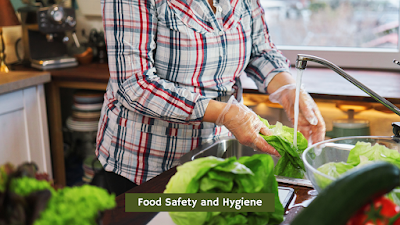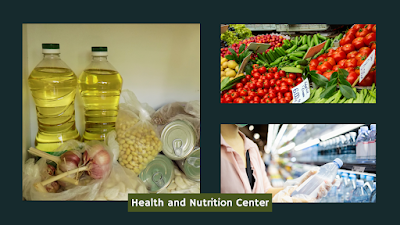Food Safety and Hygiene
Introduction
Making sure your food is safe and maintaining a balanced diet doesn't have to be expensive. In actuality, regardless of your budget, a lot of crucial food safety procedures are surprisingly inexpensive and simple to include in your daily routine.
Reasons for Concerning Food Safety:
A major public health risk is foodborne disease, which is brought on by eating contaminated foods. It may result in uncomfortable symptoms such as diarrhea, vomiting, nausea, and even hospitalization. Following food safety guidelines can safeguard your health and well-being and ultimately save you money on medical expenses and lost productivity.
Affordably Sourced Food Safety Tips:
To maintain food safety and nutritious meals, consider these cost-effective tips:
Hand Sanitization Superstar:
The first step towards food safety is basic hand washing. Use a minimum of 20 seconds for whipping up some soap and warm water between your fingers and over all surfaces. Act as follows:
Especially while handling raw meat and poultry, both before and after handling any meal.
Once you've blown your nose, coughed, sneezed, or used a bathroom.
after coming into contact with trash or animals.
An added piece of advice is to forego throwaway paper towels in favor of reusable dishrags and hand towels (microfiber is great!). Long-term savings, improved environmental quality, and less strain on your hands are all benefits of using them.
Champions of Cleanliness:
Use a cheap, homemade disinfectant to keep your kitchen surfaces spotless. In a spray bottle, combine one part vinegar to four parts water. It works just as well as commercial goods but at a far lower cost.
Different cutting boards should be used for different activities. Cross-contamination is reduced by using different cutting boards for meat and vegetables. Invest in inexpensive, long-lasting plastic cutting boards that are simple to sterilize and clean.
Remember to keep your fridge! Use your vinegar solution to frequently clean shelves and drawers. To avoid odors and spillage, store leftovers in airtight containers.
Cooking Champions:
A simple food thermometer is your first line of defense against dangerous germs, so invest in one. Use it religiously when cooking meat, poultry, and eggs. Keep in mind, that interior temperature is crucial!
Warming up leftovers? Proceed with caution. They should only be heated once, to 165°F (steaming hot). Reheating food repeatedly can reduce the chance of bacterial development.
Quickly cool cooked food to stop germs from growing. Move it to a shallow container and cool it in an ice bath or the fridge.
Tamers of Temperature:
Maintain a cold and hot environment when necessary since bacteria like warmth. After cooking, store leftovers in the refrigerator or freeze them. Make sure cooked food achieves the proper internal temperatures by using a food thermometer: 160°F for ground beef, 145°F for poultry, and 145°F for fish.
One of the following safe ways to melt frozen food is to use a refrigerator, cold running water, or the defrost setting on a microwave. Never defrost frozen food at room temperature as this encourages the growth of germs!
Shop Wisely:
The secret to affordable food safety is meal planning and grocery shopping. By just purchasing what you need, you may prevent food waste and impulsive buying. When you can, try to buy seasonal and local produce because it's frequently cheaper, fresher, and supports your neighborhood.
Food should be stored correctly as directed on the packaging. Certain foods, like potatoes and onions, are better stored at ambient temperature, while other foods fit well in the pantry or refrigerator.
Master the art of expiry dates. Examine your cupboard and refrigerator frequently, and throw out anything that has passed its prime. You avoid foodborne diseases and save money by doing this.
Conclusion:
Recall that fine devices and gourmet ingredients are not necessary for food safety. It's about knowing the fundamentals and putting them into practice in your kitchen regularly. These reasonably priced and simple-to-follow guidelines can help you enjoy tasty, healthful meals without going over budget. Eat well, cook with joy, and spend wisely!
Maintaining a healthy diet and lifestyle shouldn't break the bank. By putting these reasonably priced food safety measures into effect, you can save costs, safeguard your health, and confidently savor delectable meals. Always remember that information is power, so spread your newfound understanding of food safety to loved ones and friends to build a happier, healthier community!










0 Comments
Please do not enter any spam links in the comment box.